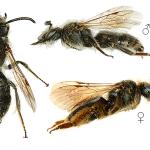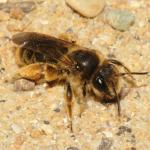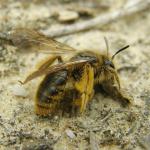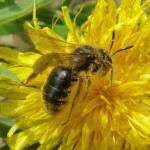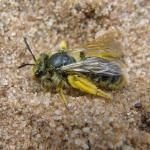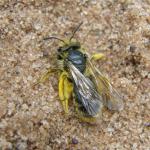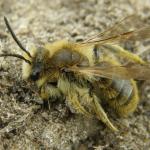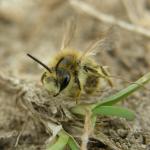Andrena fulvescens Smith, 1847, Andrena cinerascens_homonym Nylander, 1848, Andrena scabrosa Morawitz, 1866, Andrena nasalis Thomson, 1870, Andrena nudigastra Alfken, 1914, Andrena humilis ardeola Warncke, 1975, Andrena humilis cucullata Warncke, 1975, Andrena humilis hiaticola Warncke, 1975, Andrena humilis indigena Warncke, 1975
A distinctive, medium-sized Andrena, the female having a coat of golden hairs on the last two tergites. It shares this feature with the slightly smaller A. fulvago (Christ), but has dark hind tibiae, rather than pale ones. The male is one of the small group which have bright yellow markings on the clypeus. This species may be quite plentiful where it occurs, usually, but not exclusively, on sandy soils, but is decidedly local.
Found in England, from the south coast north to Yorkshire and the Lake District, Wales, Isle of Man and the Channel Islands.
Southern and central Europe, eastwards through Asia to China.
Listed as Notable B in Falk (1991) (now known as Near Threatened Nb).
Most often associated with sandy soils, although also known from coastal head deposits where the soils are friable.
Univoltine; May to July.
May nest colonially or singly in areas of bare, firm, usually sandy, soil exposed to the sun.
It seems to restrict all flower visits to yellow-flowered Asteraceae.
The cleptoparasitic bee Nomada integra Brullé is specifically associated with this species. It has been found stylopised elsewhere in Europe.
2012


